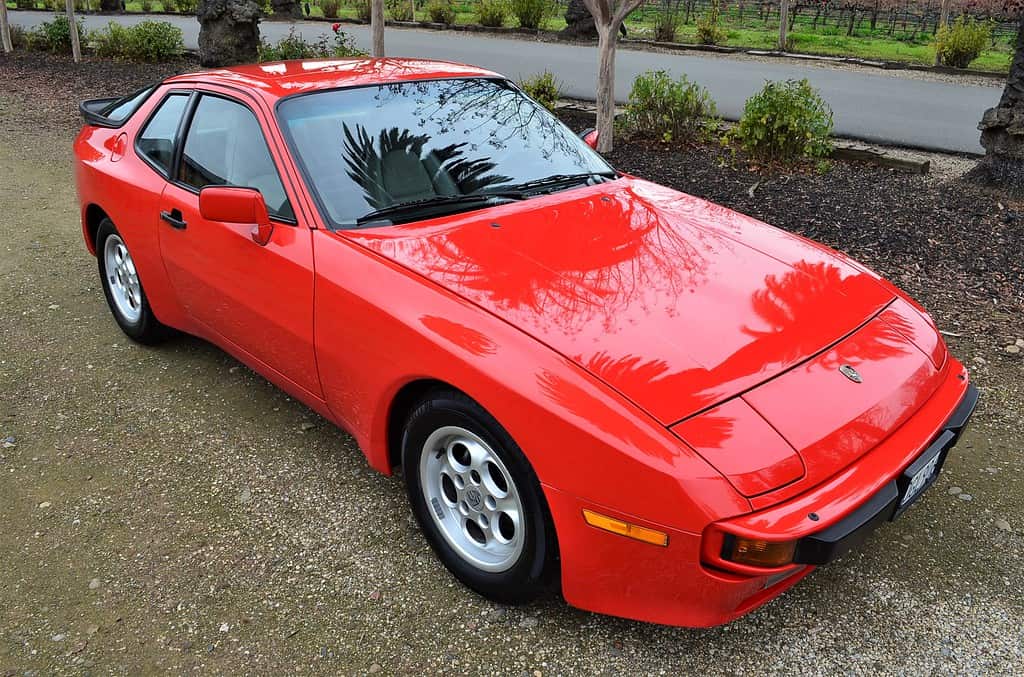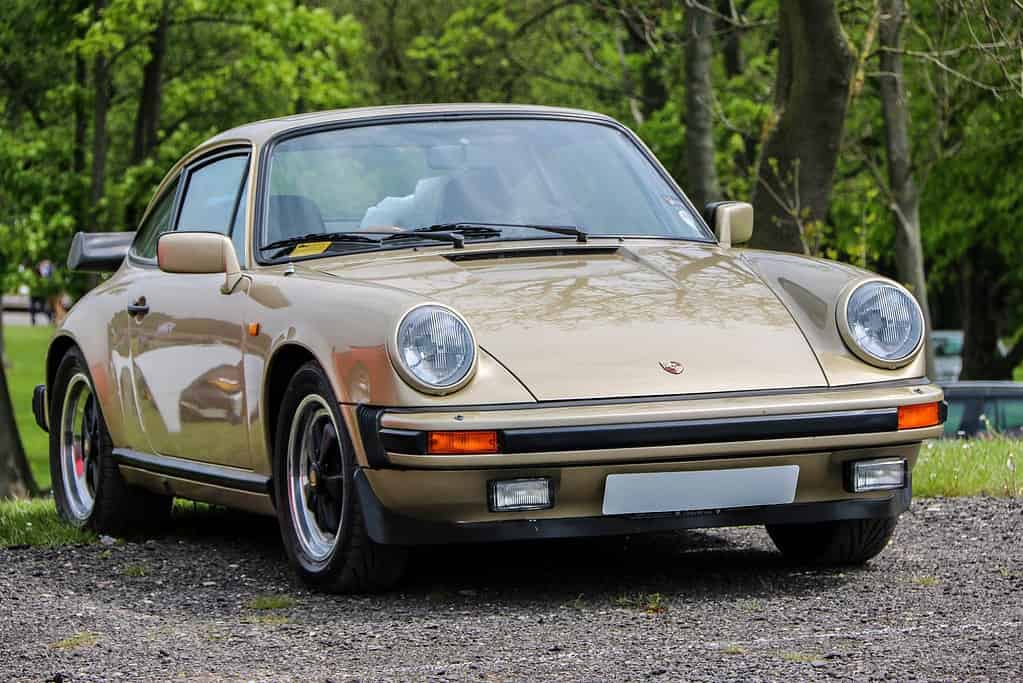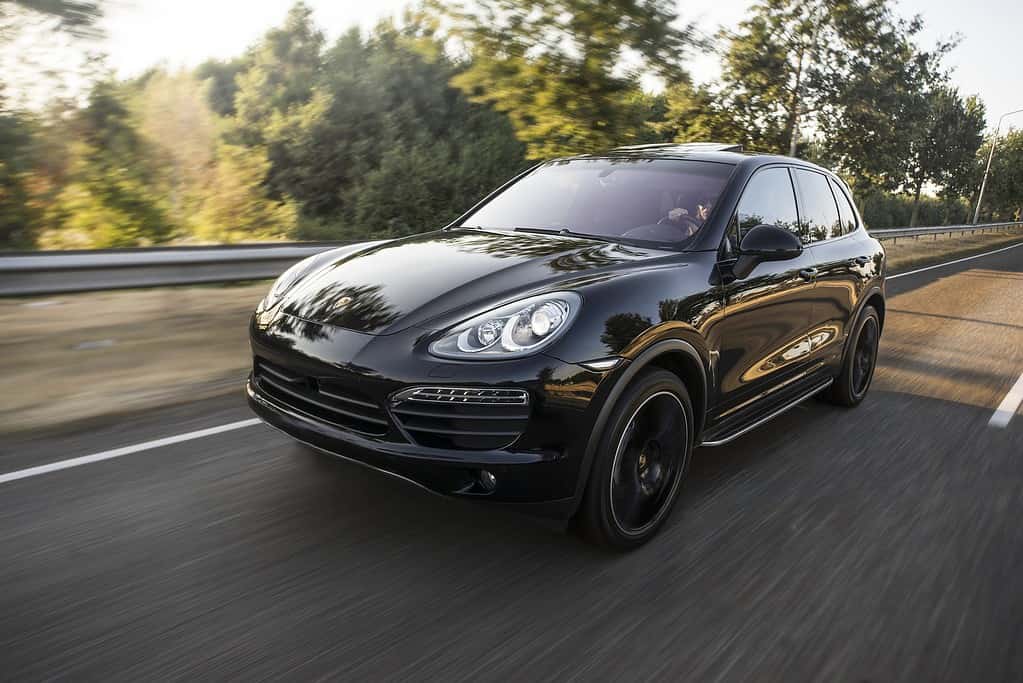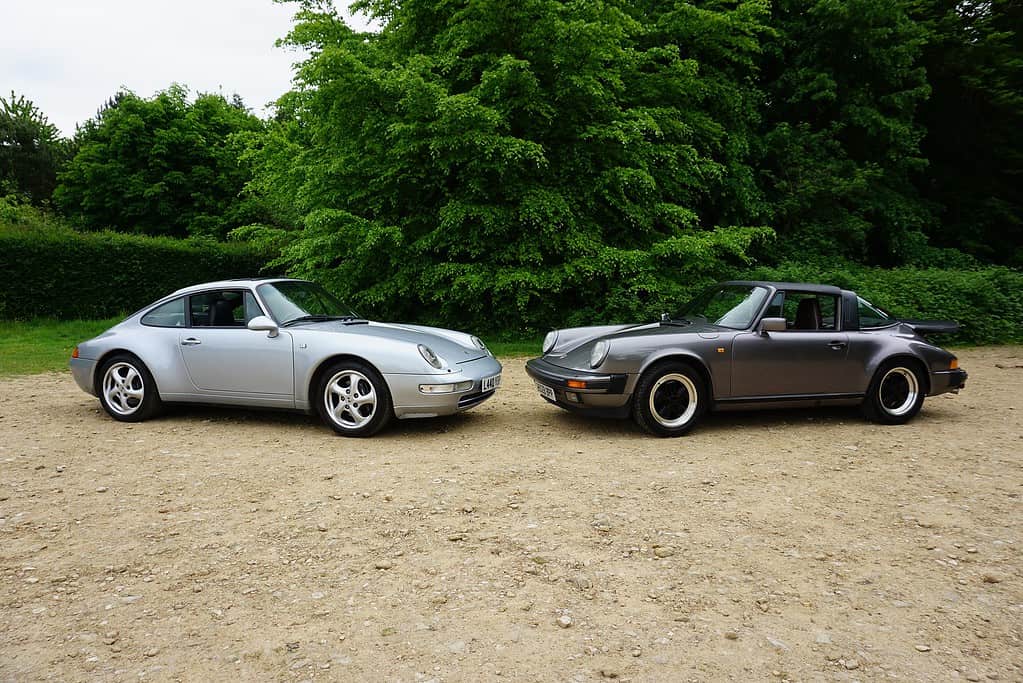Originally posted at https://www.pcarwise.com/local-help/used-porsche-buyers-guide/buying-a-used-porsche-boxster/
What You Must Know Before Buying a Used Porsche Boxster
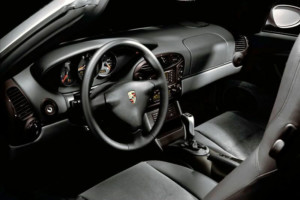 If you’re in the market for a used Porsche Boxster, our guide will help you find the bargain and avoid the bad investment. There’s no fluff or niceties here – there are plenty of resources online that bash on about horse power, cosmetic variants, historical significance and the niceties of the Boxster. All well and good, but how do you tell a good mechanical Boxster from a bad one? What are the potential pitfalls? What known problems exist and how do you avoid them? We have the answers you need.
If you’re in the market for a used Porsche Boxster, our guide will help you find the bargain and avoid the bad investment. There’s no fluff or niceties here – there are plenty of resources online that bash on about horse power, cosmetic variants, historical significance and the niceties of the Boxster. All well and good, but how do you tell a good mechanical Boxster from a bad one? What are the potential pitfalls? What known problems exist and how do you avoid them? We have the answers you need.
We concentrate on the technical things that might cost you money later if you weren’t aware of them prior to buying the car. There are risks if you’re not cautious, but with some insights and careful shopping, there are bargains to be had.
What Do We Already Know About The Boxster?
Emerging from a combination of “Boxer” engine and “Roadster,” the first-generation Porsche Boxster is heading for being 20 years old. However, the Boxster platform exists right up to the current production 718. As a result, there’s extensive knowledge available of common mechanical problems with these cars. The good news is the Boxster is generally reliable and has aged gracefully.
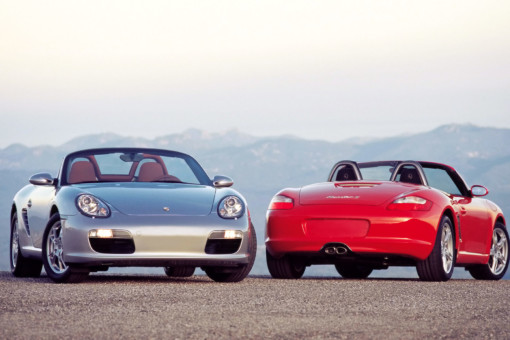

The mid-engine two-seater roadster design led Porsche sales volume until the introduction of the Cayenne. The Boxster is well balanced, responsive and easy to drive. Maintenance and running costs are at the low end of the Porsche ownership scale. Mechanically, the design is generally solid, with the exception of a few items highlighted below.
In the used car market, you’ll find Boxster 986 (1997-2004), 987 (2005-2012), 981 (2012-2016) and current 718 versions available. Prices vary, however, in general the Boxster is a bargain with 986 and 987 models at very affordable prices. All models have their own unique set of problems, however, as the Boxster has matured, there are definitely less catastrophic potential problems with the later versions. That doesn’t mean ignore the early versions, it simply means more caution is required.
Spare Parts and Repairs
Maintenance Costs
You’re buying a Porsche, so don’t compare running costs to a small domestic hatchback! Yes, parts and some labor costs will be higher than a typical American or Japanese vehicle. However, save for a few notable items discussed below, the Boxster is solid and reliable. You’re going to pay a little more for an oil change and standard maintenance items, however, don’t try to cheap these. It’s important to have the car inspected and serviced by a professional with genuine Porsche expertise. A good mechanical understanding of these cars can help identify issues early and save you money in the long term. See our guide to Porsche repair shops for your local expert or contact us and we’ll make a recommendation for you.
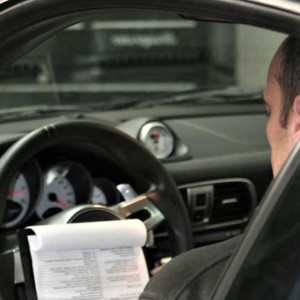 Pre-Purchase Inspection – PPI
Pre-Purchase Inspection – PPI
The first step, once you’ve identified a candidate, is to get a thorough inspection by a local expert. The pre-purchase inspection is designed to identify mechanical problems that may not be clearly evident at first glance. In our buyer guide below we’ve extensively highlighted those potential issues to be on the look out for. Getting a repair history on the car, if available, is helpful and will instantly identify or eliminate potential problem areas.
The number of owners doesn’t necessarily matter with a Porsche – the work and records performed do. Many owners are enthusiasts and will keep all the invoices from services or repairs.
If the seller wont let you inspect the car, walk away.
Mileage and Service History
In 20 year old cars, higher mileage is not necessarily a bad thing. In fact, a Boxster that has been effectively used, could be in a more superior condition than one that has an attractively low mileage reading. Low mileage cars can have hidden issues, so you’ll want to take a good look through any documented history available. A recognizable pattern of servicing on higher mileage cars is essential. On the lower mileage cars, timed intervals between services is the key indicator.
Low mileage cars can miss their planned service intervals and despite a lack of miles, significant wear and tear can take place. Look to see when the last time the plugs were changed – 10 years is the limit before plugs must be replaced. The brake fluid should be flushed every 2 or 3 years. Check the DOT on the tires – lots of tread doesn’t mean they’re healthy! See more examples below.
What’s it Like to Live With?
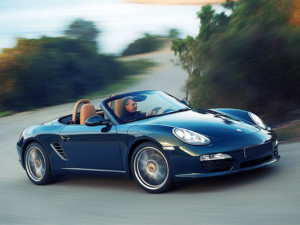 If you are a fan of top down motoring, the Boxster is hard to beat. It’s a great little two seat coupe that handles nicely, is well balanced and cool with the top down.
If you are a fan of top down motoring, the Boxster is hard to beat. It’s a great little two seat coupe that handles nicely, is well balanced and cool with the top down.
All generations of the Boxster are easy to drive, park and have fun in. The ride quality and handling has improved through the versions, but even the original Boxster is nimble and fun. The original version is somewhat under powered and you certainly won’t be setting lap records in it! Later versions certainly have a bit more zip about them, but in general the Boxster was designed to not compete with the 911, so it will always be behind in performance.
From a practical standpoint, there’s not much you can do other than drive it. There’s really no room for more than one small bag in the luggage area and the two seats provide just enough room for you and someone you care about – at least for now!
Early versions have plastic interior parts that easily become discolored due to wear and tear. However, there is a healthy used parts market that can solve some of those problems easily. Generally, the interior is well laid out and practical. The later versions have better styled interiors than the original.
Without proper care, the convertible top can quickly become faded and worn. Replacement typically will run you $1K but the results are spectacular and make the car look brand new. The early versions came with plastic rear windows in the convertible top that degrade rapidly. If the top is in good condition, you can easily replace this plastic window with a glass one – definitely adds value to the car.
The Boxster has quite large tires. If the car you buy has 19-inch rims, you’ll be looking at approx. $1k for a set of 4 tires. The rear tires will wear quicker than the fronts on the Boxster due to suspension setup. It’s really important to stay on top of vehicle alignment – any loss of alignment on the rear of the Boxster will eat the inner shoulder of the rear tire rapidly. This is difficult to see because it’s so far under the car, but check it regularly or you’ll be buying rear tires way more often than you expect.
What Would We Buy?
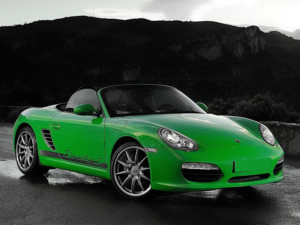 There was a time when the Boxster held the top spot in the Porsche sales figures. However, the passing years have seen a steady decline in popularity, with new 718 sales (which include the Cayman) reaching a mere 3800 in the USA for the whole of 2019! See our article Different Perspectives for more information.
There was a time when the Boxster held the top spot in the Porsche sales figures. However, the passing years have seen a steady decline in popularity, with new 718 sales (which include the Cayman) reaching a mere 3800 in the USA for the whole of 2019! See our article Different Perspectives for more information.
The Boxster is a wonderful choice for practical top down motoring. Right now, the late 987 version is the likely candidate for best value for money. The balance with the Boxster used price, is always, what kind of 911 can you buy for the same money?
Late used 987 versions are selling in the late teens for vehicles with lower mileage. This is a lot of car for the money – most of the issues with the Boxster were worked out of the design by the time the late 987 reached the showroom. The 981 version currently attracts too much money and we’d buy an older 911 instead of a similar priced later 981 Boxster.
The bargain is the early 986 version. Lower mileage versions are available for $8K! What a steal! Now, if you can find a 986 that has had work completed on the areas of concern like the IMS bearing and has been well taken care of, you have a great car for really low money.
Don’t buy an automatic Boxster! Get the one with three pedals. The automatic version is not good for your sports car credibility and my 80-year-old mother drives one!
So, if you’re in the market for buying a used Porsche Boxster what should you be paying attention to before you commit to buy?
Look Out For These Potential Mechanical Issues
IMS Bearing – Cars Up to 2006
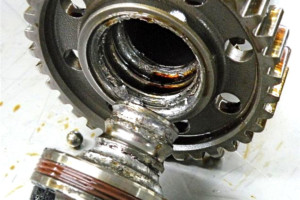 The M96 range of Porsche engines fitted to the 911 and Boxster up to 2005 had a catastrophic engine failure associated with the intermediate shaft bearing or IMS. At the end of the intermediate shaft connecting both ends of the timing chain mechanisms, a low cost, self-lubricated ball bearing style bearing was installed – think of it like a wheel bearing. Like wheel bearings, the IMS life is limited and it can come apart causing significant damage around the engine.
The M96 range of Porsche engines fitted to the 911 and Boxster up to 2005 had a catastrophic engine failure associated with the intermediate shaft bearing or IMS. At the end of the intermediate shaft connecting both ends of the timing chain mechanisms, a low cost, self-lubricated ball bearing style bearing was installed – think of it like a wheel bearing. Like wheel bearings, the IMS life is limited and it can come apart causing significant damage around the engine.
Much hype has been associated with this potential failure by people who have to gain from it, yet the anecdotal evidence shows less than 5% of the bearings fail. Porsche shipped approx. 77,000 vehicles to the USA that could have a bad IMS bearing. Even the most enthusiastic counting of IMS failures produces a total around 3500 or less than 5%. This means there are more than 73,000 vehicles that haven’t had the problem yet or have been retrofit with a newer bearing.
The M96 engine cars built up to 2000 are less susceptible to the failure than the later ones. The early cars were fitted with a dual row bearing that was more reliable then the later single row bearing fitted to the M96 engine after 2000.
Failure is expensive and usually results in engine replacement. Most diligent owners opted to preempt the failure and replace the Porsche single row bearing with an LN dual row version. Cars that have had the IMS bearing replaced have a higher value than ones that haven’t. So, replacing the bearing usually brings not only peace of mind, but a financial return when you sell the car.
If the bearing has been replaced, there will be a sticker and serial number of the bearing in the engine lid. All the bearings are serial numbered and recorded with LN Engineering. If the bearing has been replaced in a manual car, you should expect to see that the clutch was replaced at the same time.
Don’t panic if the bearing hasn’t been replaced – reduce the cost of the car in negotiation and allow about $3K for doing the work. Again, despite the hype, less than 5% fail – all you need do is find a local Independent Porsche repair shop that can retrofit the IMS bearing for you.
Overheating – Cracked Cylinder Liners – 986 & 987
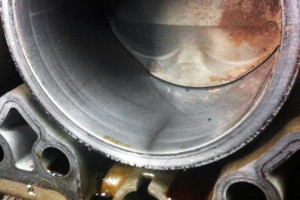 The M96 and M97 flat 6 engines fitted in the 986 and 987 Boxster are subject to cracks in the liners of the cylinders. Each cylinder bore in the case half is lined with a one-piece sleeve or liner. The liner material is different from the surrounding case half and sometimes cracks can appear.
The M96 and M97 flat 6 engines fitted in the 986 and 987 Boxster are subject to cracks in the liners of the cylinders. Each cylinder bore in the case half is lined with a one-piece sleeve or liner. The liner material is different from the surrounding case half and sometimes cracks can appear.
Results from a crack vary, but typically the most common is coolant loss with subsequent engine overheating. Sometimes, a crack in the cylinder liner can take a considerable amount of running time to fully open and cause problems. First, note the coolant level when the engine is cold. Take your time here – you want to drive the car for 30 mins.
After driving the car let it sit and idle. The front radiator fans should come on and the engine should maintain a steady temp. If the engine continues to warm and will eventually overheat, walk away.
Turn off and take a look at the coolant level – it should have risen and be falling back toward the cold level. If the level has gone down or is still at the cold level, there could be a small coolant loss through a cracked liner. The trained nose can smell coolant from the exhaust when the engine is running.
Cylinder Scoring – The Deadly Knocking Noise – 986 & 987
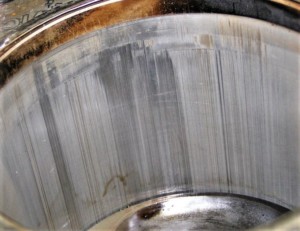 Lift the car and have a listen from below while the engine is running. You might need a repair shop to do that for you. You’ll hear the M96 and M97 flat 6 engine in the Boxster make a consistent ticking sound. Much of this is the proximity of your ear to the valve train and the exhaust headers. However, there is a distinctly different sound that identifies with a particular issue that you don’t want to hear.
Lift the car and have a listen from below while the engine is running. You might need a repair shop to do that for you. You’ll hear the M96 and M97 flat 6 engine in the Boxster make a consistent ticking sound. Much of this is the proximity of your ear to the valve train and the exhaust headers. However, there is a distinctly different sound that identifies with a particular issue that you don’t want to hear.
These engines are famed for cylinder scoring – deep gouges in the cylinder liner, usually associated with a knocking noise and eventually catastrophic engine failure. The root cause of this issue is open to discussion, however, wear in the piston rings and liners causes the piston to wobble. The wobble occurs at the bottom of the stroke and results in the piston skirt dragging against the cylinder wall thereby scoring the liner.
The sound your listening for is not a tick; it’s a rhythmic knock and usually shows up first on the passenger bank of the flat 6 engines – although, it can appear on any cylinder. The rhythmic knock is the piston changing position at the bottom of the stroke and hitting the liner. In many cases, even with the head off the engine, the scoring cannot be seen until the piston is removed – it can be way down at the bottom of the cylinder below the lowest point the rings meet the walls. Sometimes it can be seen by scoping down the spark plug tube, but the best view without disassembling the engine, comes from removing the oil pan and scoping from the inside.
The only way out of this is an engine rebuild – So, avoid this car.
Cam to Crank Timing Deviation – All Chassis
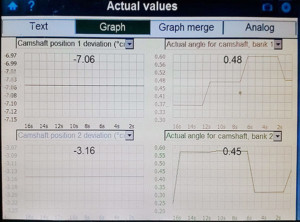 Timing is everything; especially in comedy and engines! The opening and closing of valves, the piston rising and falling in the cylinder and a spark are required at precise times during an engine rotation. The major moving parts are connected by chains and these ensure the relationship between those moving parts is maintained regardless of the rotational speed. The rotation is measured in degrees of a full circle. So, for example, at degree zero; piston 1 should be at the top of the cylinder and the intake and exhaust valves closed. This is known as top dead center or TDC.
Timing is everything; especially in comedy and engines! The opening and closing of valves, the piston rising and falling in the cylinder and a spark are required at precise times during an engine rotation. The major moving parts are connected by chains and these ensure the relationship between those moving parts is maintained regardless of the rotational speed. The rotation is measured in degrees of a full circle. So, for example, at degree zero; piston 1 should be at the top of the cylinder and the intake and exhaust valves closed. This is known as top dead center or TDC.
Naturally over time, the components supporting those timing chains will wear – the chain itself, guide rails, tensioners etc. will all wear and cause a deviation in the precise timing angles between camshafts and crankshaft. The engine management system is measuring the angles in every rotation and within a range of angles, can adjust the timing of fuel delivery and spark to compensate for wear changes. However, extended wear can produce an angle outside of the allowed deviation range and a fault condition will be set.
The earlier Boxster experienced issues with stretching timing chains and significant wear on the timing guide rails. This caused a nasty rattle at startup and generally set faults during acceleration. Most of these issues were corrected in later cars, but during the life of an engine you should expect that these vital timing components will wear.
You need a clear picture of where the used vehicle you propose to buy is in this wear process. A competent Porsche repair shop can tell you what the deviation angle between the cam and crank is during a used car inspection. This is a simple read from a diagnostic device and a clear indicator as to the health of the engine timing.
The change in angle will affect performance and is almost certainly not something you could pick up on during a test drive of an unfamiliar car. Replacing the chains, guides and tensioners to correct this problem is not an inexpensive proposition – it is however, relatively straightforward if your budget allows.
Fault Codes and Over-Revs – All Chassis
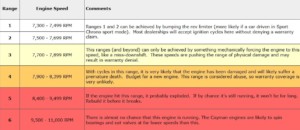 Before buying any car, it is essential to be certain when the last time the engine management fault codes were cleared and to check the status of the emission monitors. It’s not difficult for a seller to clear the faults just before you arrive to test drive. Clearing the engine faults also resets the emissions monitor system to a state of “not ready.” Emission monitor tests often occur over multiple drive cycles and after a reset, faults may not return for a significant number of miles. Again, this is easy for a competent shop to check or indeed the DIYer using a handheld scanner.
Before buying any car, it is essential to be certain when the last time the engine management fault codes were cleared and to check the status of the emission monitors. It’s not difficult for a seller to clear the faults just before you arrive to test drive. Clearing the engine faults also resets the emissions monitor system to a state of “not ready.” Emission monitor tests often occur over multiple drive cycles and after a reset, faults may not return for a significant number of miles. Again, this is easy for a competent shop to check or indeed the DIYer using a handheld scanner.
How hard has the car been driven? Taking the engine to the red line for RPM is a good thing, but going over the red line obviously can cause damage. A gear change at red line will actually cause the revs to increase slightly momentarily – nothing bad here. But, if you select the wrong gear, the engine revs to go way over the red line. This is the famous “miss-shift” that has caused many engine explosions.
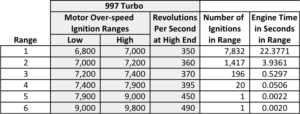 Thankfully, Porsche engine management records many things and one of the most significant is known as an over-rev situation. Data is permanently stored within the ECU showing running hours and when engine events occurred. There are six levels of over-revs recorded ranging from the engine being red-lined through to what would be a potentially catastrophically high RPM event. Events in the first category suggests the car has been properly exercised, but events in the higher categories could be hiding a potential life shortening engine event.
Thankfully, Porsche engine management records many things and one of the most significant is known as an over-rev situation. Data is permanently stored within the ECU showing running hours and when engine events occurred. There are six levels of over-revs recorded ranging from the engine being red-lined through to what would be a potentially catastrophically high RPM event. Events in the first category suggests the car has been properly exercised, but events in the higher categories could be hiding a potential life shortening engine event.
Many Porsche owners like to go to track days. On the track, gear changes will occur right around the rpm maximum red line. These events will be recorded if they reach the lower levels of the over rev counter. Multiple recorded events in the lower over-rev categories could be a sign of how much track time the car has experienced.
Oil Leaks – All Chassis
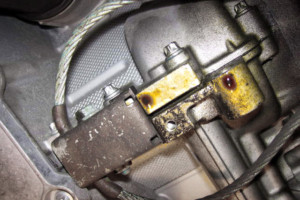 There are some common areas where oil leaks occur on the Boxster engine. Most are easily fixed and are part of the normal wear and tear process. One of the most common areas for an oil leak is the engine rear main seal. See our common problems page for more information. Leaking oil used to just be seen as a annoying stain on the driveway and a potential fire hazard. However, modern cars feature many electronic engine management systems that can potentially be severely damaged by oil ingress.
There are some common areas where oil leaks occur on the Boxster engine. Most are easily fixed and are part of the normal wear and tear process. One of the most common areas for an oil leak is the engine rear main seal. See our common problems page for more information. Leaking oil used to just be seen as a annoying stain on the driveway and a potential fire hazard. However, modern cars feature many electronic engine management systems that can potentially be severely damaged by oil ingress.
Oil leaks should not be a barrier to purchase, but they should be considered in terms of the purchase price – what appears to be a minor oil leak could turn into an expensive job. Again, this is where a competent shop should be able to accurately asses and relay the cost of an oil leak repair.
Air Oil Separator
An integral part of the emissions system, the Air Oil Separator (AOS) is designed to extract oil from gases in the crankcase, recycle the oil to the sump and send the gas through the combustion path to be burnt and cleaned by the catalytic converters. The AOS has caused numerous issues on Porsche engines.
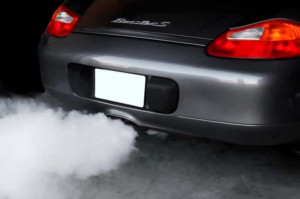 As the membrane in the AOS fails, oil is sucked into the air intake. Initially this can show up as a check engine light for fuel adaptations and the oil can be deposited on the o2 sensors and cause emission faults. Of course, once it fails completely and oil is sucked into the intake, the resultant huge clouds of white smoke are fairly obvious. At that point, it’s clear what needs to be done. However, replacing the aos sooner, rather than later, is a good precaution.
As the membrane in the AOS fails, oil is sucked into the air intake. Initially this can show up as a check engine light for fuel adaptations and the oil can be deposited on the o2 sensors and cause emission faults. Of course, once it fails completely and oil is sucked into the intake, the resultant huge clouds of white smoke are fairly obvious. At that point, it’s clear what needs to be done. However, replacing the aos sooner, rather than later, is a good precaution.
A failing aos is the likely cause of rear main seal failure, as it is in other VAG cars. Crankcase gas is not extracted well enough, pressure builds in the case under acceleration and escapes out of the rear main seal causing seal failure and the resultant oil leak. A failing aos also causes oil pass into the intake and will cause the engine management to adjust fuel mixtures. The changing mixture can cause over fueling and lead to other more significant problems.
Check to see when the last replacement of the AOS was completed on the car you plan to buy. If there is no record, plan to replace it as a precaution.
Soft Top – All Chassis
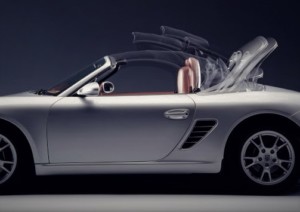 Make sure you spend time checking the operation of the roof to ensure it goes up and down smoothly. Many of the known problems with the opening & closing mechanism should have been resolved during the previous owner’s time. Most of the top issues are usually simple and inexpensive to fix, but can be annoying if you only discover them when you want to drop the top on your first sunny day.
Make sure you spend time checking the operation of the roof to ensure it goes up and down smoothly. Many of the known problems with the opening & closing mechanism should have been resolved during the previous owner’s time. Most of the top issues are usually simple and inexpensive to fix, but can be annoying if you only discover them when you want to drop the top on your first sunny day.
Porsche revised the mechanism that operates the top a few times during the life of the Boxster. Older original versions of the mechanism have parts that cannot be serviced. They need to be replaced with the entire revised system. Worth checking the history on the car to see if any work on the top has been recorded.
Importantly, look for signs of leaks from the roof into the cabin. Look behind the seats in particular. The rear roof drains can get blocked by leaves and debris over time. This results in rainwater dripping into an area of the cabin in which electronic control units are located. It is simple enough to keep the drains clear, but failing to do so can be an expensive and annoying oversight.
If the top has the plastic rear window, don’t be surprised to see this fogged. Check carefully for signs of cracks or degrading of the stitching around this window. This can be fixed relatively simply by a competent upholstery shop.
Bodywork – All Chassis
Corrosion is a rare item on the bodywork of the Porsche Boxster. Vehicles in the Midwest can exhibit some degrading of the lower panels if they have been subjected to road chemicals. However, most Porsche owners store their cars over the winter to avoid this. The bodywork of the Boxster 986 should be in perfect condition – in many cases the paint will have faded. Make friends with a good detailer who can do some paint restoration for you.
Suspension and Tires – All Chassis
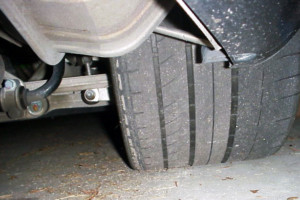 The suspension on the Boxster is very solid. Naturally, over time and mileage wear can occur in plastic or rubber bushings that help to cushion the ride. Listen out for squeaks or clunks over bumps and check for leaks from the suspension struts.
The suspension on the Boxster is very solid. Naturally, over time and mileage wear can occur in plastic or rubber bushings that help to cushion the ride. Listen out for squeaks or clunks over bumps and check for leaks from the suspension struts.
Worn suspension components typically exhibit some noise and will show up as uneven tire wear. Check the tires thoroughly for smooth wear patterns and pay attention to the tire DOT date. This is the date the tires were manufactured and you’ll want to see a date that is no more than 5 years earlier. Low mileage cars in particular have this problem – the tires do not experience wear because of the lack of mileage. However, tires have a shelf life and will degrade while they sit; lots of tread doesn’t always mean a healthy tire. Despite the tread remaining, a tire that is more than 5 years old could rapidly degrade or fail when you’re driving.
On any Porsche, make sure you get under the car and take a good look at the inner shoulders of the tires – this is the most common place for extreme wear and the most likely to be missed by a walk round the exterior.
Transmission & Clutch – All Chassis
The manual and automatic transmissions on the Boxster are generally highly reliable. Both should change gear smoothly and without any hesitation. The auto transmission can be scanned for faults but rarely has issues. Fluid services can be performed on both transmissions and the duration of the time interval is quite high. Look for previous indications this has been done or understand where the car is in terms of time related fluid changes for the transmission. Typically, problems with the automatic transmission usually spell replacement – not cheap!
How long does a clutch last?
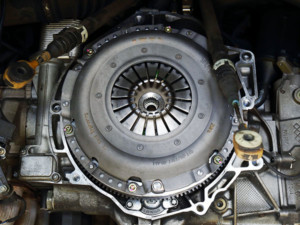 The answer depends on who is driving the car! We’ve seen customers destroy a clutch in 15K miles and we’ve also seen many that have more than 100K miles on them. Wear on the Boxster clutch should be very noticeable. Engine revs will increase while the car does not accelerate. This is usually associated with a nasty burning smell. A slipping clutch spells trouble.
The answer depends on who is driving the car! We’ve seen customers destroy a clutch in 15K miles and we’ve also seen many that have more than 100K miles on them. Wear on the Boxster clutch should be very noticeable. Engine revs will increase while the car does not accelerate. This is usually associated with a nasty burning smell. A slipping clutch spells trouble.
When the clutch slips it very quickly does damage to the flywheel. Replacing the flywheel on the Boxster is simple during the clutch work, but typically adds $700 to the overall cost in parts alone! Check the used Boxster you plan to buy for clutch replacement history and plan to have to do the work at some point in the future.
Brakes – All Chassis
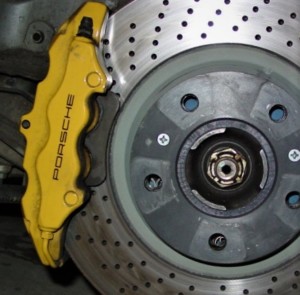 The brakes on the Boxster are generally excellent. Brake pad material does degrade over time, so again on low mileage examples check to see when the last brake service was performed. The brake fluid should be changed every few years regardless of mileage. Again, a competent shop should be able to measure the moisture content in the brake fluid and recommend the next flush interval. If in doubt, flush the fluid.
The brakes on the Boxster are generally excellent. Brake pad material does degrade over time, so again on low mileage examples check to see when the last brake service was performed. The brake fluid should be changed every few years regardless of mileage. Again, a competent shop should be able to measure the moisture content in the brake fluid and recommend the next flush interval. If in doubt, flush the fluid.
Look for new pads on old rotors. Both the pads and rotors should always be changed at the same time. Used car centers are famed for just replacing the pads on old rotors and claiming the car has new brakes. There should be a wear lip on the rotor and the size of that lip will determine how much mileage remains. Worn rotors crack or disintegrate which can be particularly unpleasant when driving!
Coolant radiators and air-conditioning condensers – All Chassis
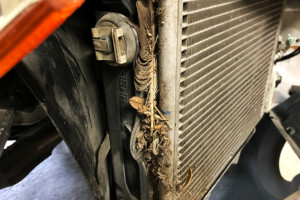 The design of the Boxster has the placement of the coolant radiators and air-conditioning condensers low down in the front bumper. The position and open vent nature of the design leaves them not only susceptible to stone impacts, but also to corrosion due to the buildup of debris and dirt that is stuck close to the side of the radiators.
The design of the Boxster has the placement of the coolant radiators and air-conditioning condensers low down in the front bumper. The position and open vent nature of the design leaves them not only susceptible to stone impacts, but also to corrosion due to the buildup of debris and dirt that is stuck close to the side of the radiators.
These front ducts need to be cleaned out regularly or protected by an aftermarket screen. The front bumper has to be removed to reach the radiators and most owners never do it.
Take a flash light and look closely to see whether the front air intakes are full of rotting leaves and debris when you inspect the Boxster. Damaged or corroded coolant radiators and AC condensers cannot be repaired and must be replaced. Check the AC works and look for signs of a dry white powder stain under the bumper cover – this is a telltale sign of a minor coolant leak.
Exhaust and Catalytic Converters – 986 – 987
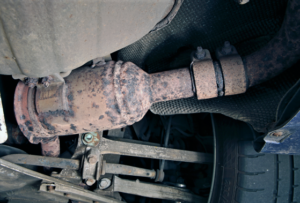 The exhaust on the older Boxster is now starting to show up as an issue. Cracks in the exhaust manifolds are becoming more common. Often the crack is after the collector and in the main pipe ahead of the catalytic converter. Replacement of the header section is required.
The exhaust on the older Boxster is now starting to show up as an issue. Cracks in the exhaust manifolds are becoming more common. Often the crack is after the collector and in the main pipe ahead of the catalytic converter. Replacement of the header section is required.
For the older Boxster, Porsche does not provide the exhaust header parts any more, so aftermarket replacement is the only choice. The same is true for the catalytic converter sections, which over time will need to be replaced to maintain emission standards. Often the catalytic converters degrade internally and will fall apart. This can lead to a nasty rattle or worse a blocked exhaust – this is to be avoided if at all possible.
Hello or Good Buy
The older Boxster is an excellent way to enter the Porsche ownership world for easy money. Ownership allows you access to the PCA regions around the country and can turn you into an enthusiast, without breaking the bank! The Boxster is very pretty and a fun car, so look past the sparkle and do your research. Uncovering a good one as they age is not always simple, but they can be tremendous fun to own for a relatively modest investment. Later versions, such as the 981, remain extremely strong cars and enjoy relatively few issues.

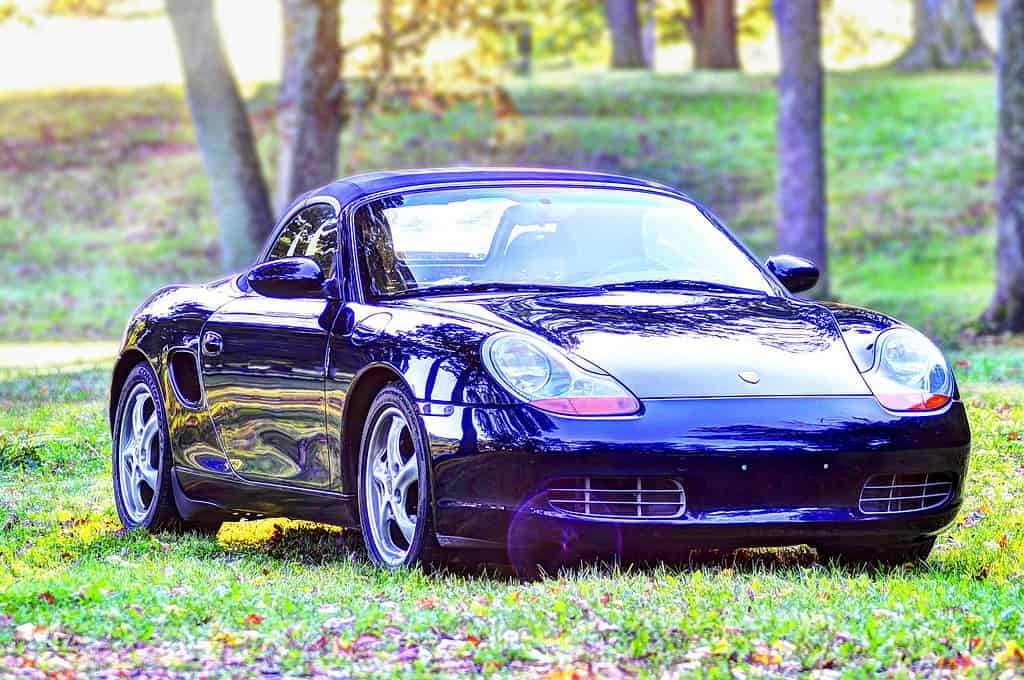
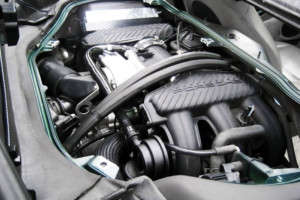 The Boxster is easy to upgrade from both a performance or cosmetic stand point. It shares much of the 911 series parts, so availability of replacement components is easy. Most are still available directly from Porsche and a healthy used parts market exists to fill the gaps. There are plenty of third-party parts vendors online that can offer parts at lower cost than Porsche directly. There is also a good deal of experience and expertise in
The Boxster is easy to upgrade from both a performance or cosmetic stand point. It shares much of the 911 series parts, so availability of replacement components is easy. Most are still available directly from Porsche and a healthy used parts market exists to fill the gaps. There are plenty of third-party parts vendors online that can offer parts at lower cost than Porsche directly. There is also a good deal of experience and expertise in 



